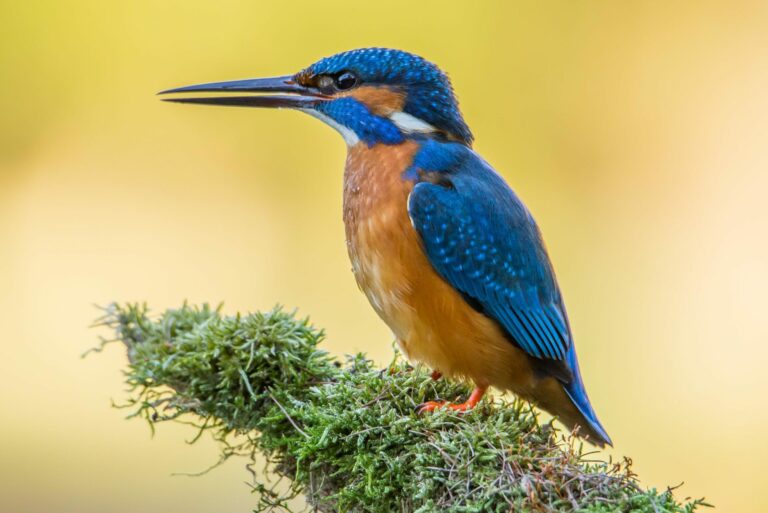Alcedo atthis

Alcedo atthis reaches a body length of 16 cm, with a long, pointed, and straight beak. The plumage on the upper side of the body is strikingly turquoise blue, while the underside is reddish-brown. The head is relatively large compared to the body, and the tail is very short. The legs are red in color (Schaefer 2018). White spots can be found on the neck and nape. The kingfisher mainly lives near water bodies such as rivers, lakes, or streams, and nests in burrows in the ground (Peterson et al. 1993). Reproduction takes place in spring, with 6 to 7 eggs laid per clutch. The young hatch after 18-21 days. Kingfishers typically breed twice a year. Declining habitat quality and water pollution are the main reasons for the decline in kingfisher populations (Moreno-Opo 2003).
Diet: The kingfisher feeds on small fish and other smaller aquatic organisms, which it captures by plunge diving (Schaefer 2018).
Conservation status: The kingfisher is classified as “Least Concern” on the global level in the IUCN Red List of Threatened Species, but it is listed as “Vulnerable” with a decreasing population trend in Europe. In Germany, Alcedo atthis is considered “not secure.” This species is “protected” under the Birds Directive and “strictly protected” according to the Federal Species Protection Ordinance (BArtSchV).
-
Moreno-Opo, R (2003)Martín Pescador Común Alcedo atthis (Libro rojo de las aves de España).
-
Peterson, R et al. (1993)A Field Guide to the Birds of Britain and Europe: Houghton Mifflin Harcourt.
-
Schaefer, M (2018)Brohmer – Fauna von Deutschland. Ein Bestimmungsbuch unserer heimischen Tierwelt: Quelle & Meyer Verlag GmbH & Co.